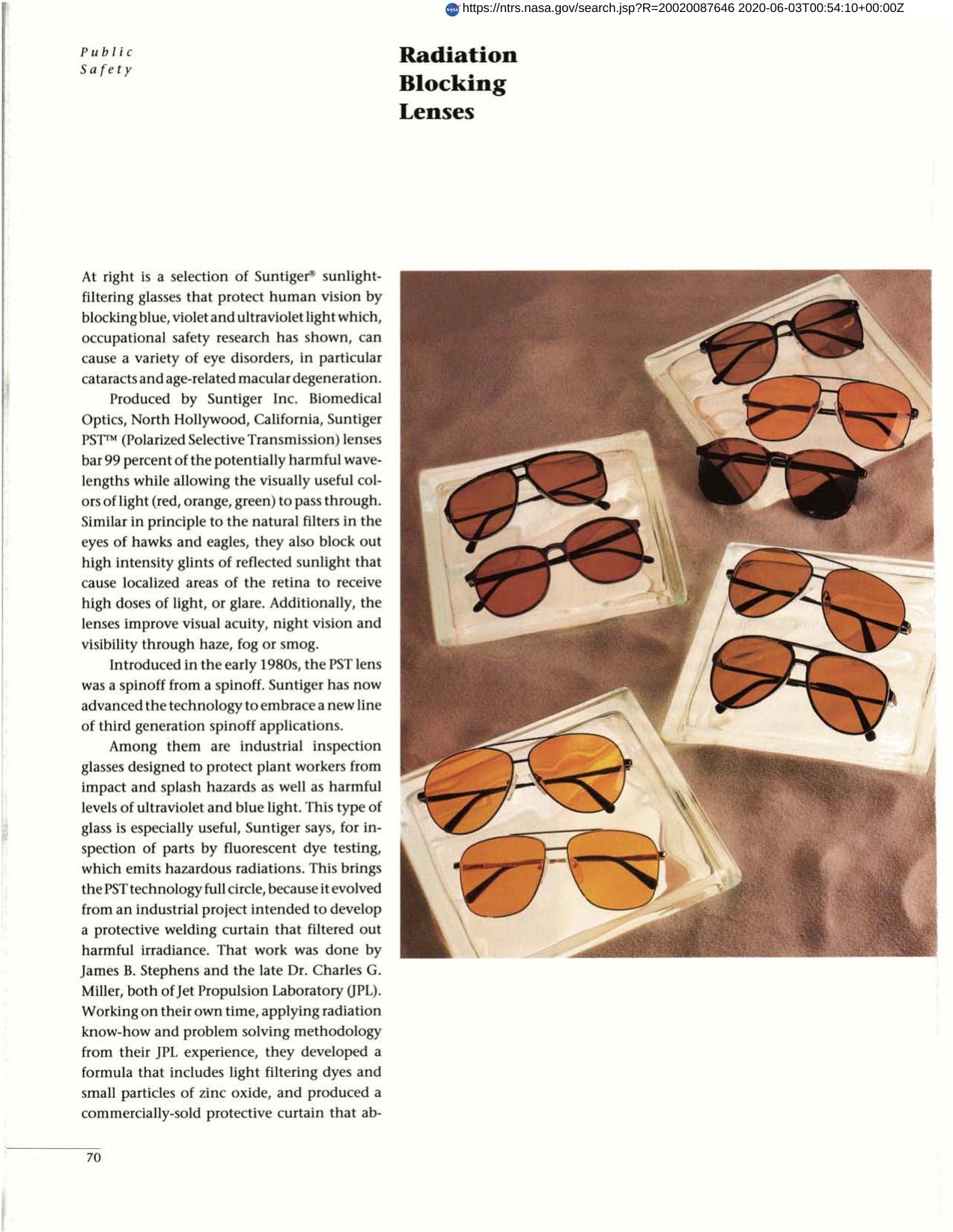
Radiation Blocking Lenses (1989)
Biomedical Optical Company of America's (BOCA) suntiger lenses, similar in principle to natural filters in the eyes of hawks and eagles, bar 99 percent of potentially harmful wavelengths, while allowing visually useful colors of light (red, orange, green) to pass through. They also improve visual acuity, night vision and haze or fog visibility. The lenses evolved from work done by James B. Stephens and Dr. Charles G. Miller of the Jet Propulsion Laboratory. They developed a formula and produced a commercial welding curtain that absorbs, filters, and scatters light. This research led to protective glasses now used by dentists, workers in hazardous environments, CRT operators and skiers.
Full article: http://hdl.handle.net/hdl:2060/20020087646

Radiation Blocking Lenses (1989)

Radiation Blocking Lenses (1989)













